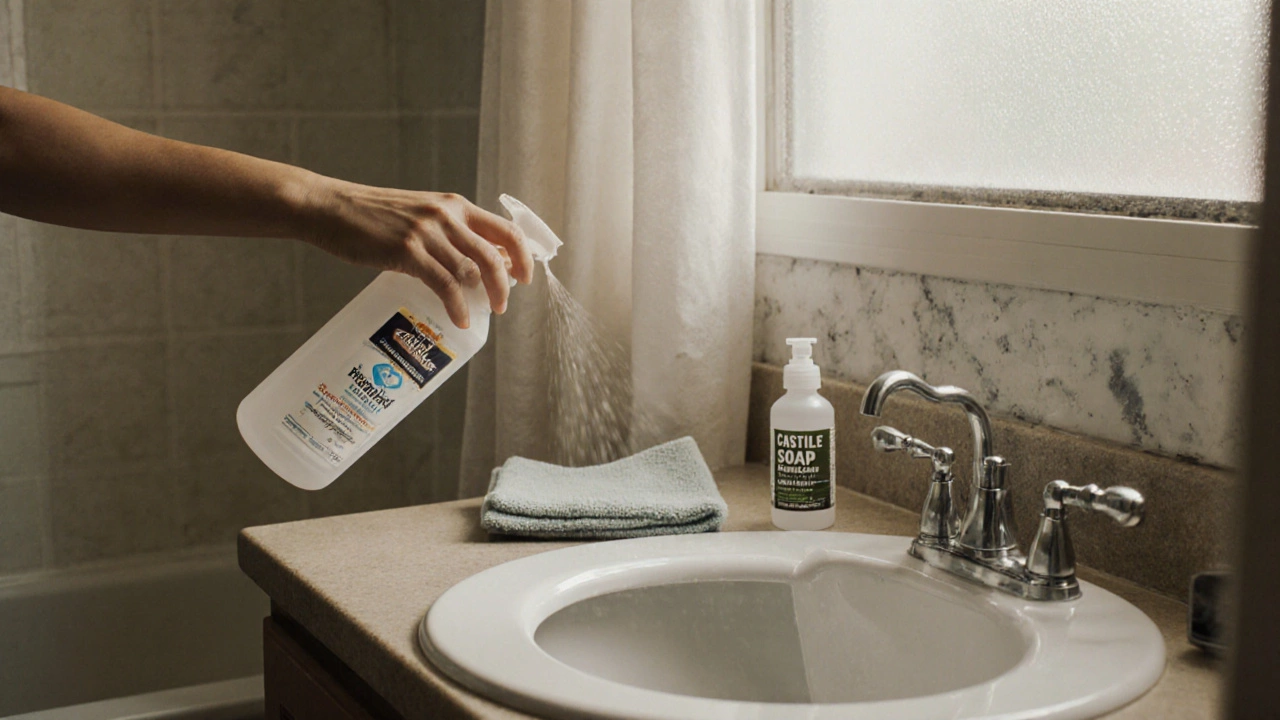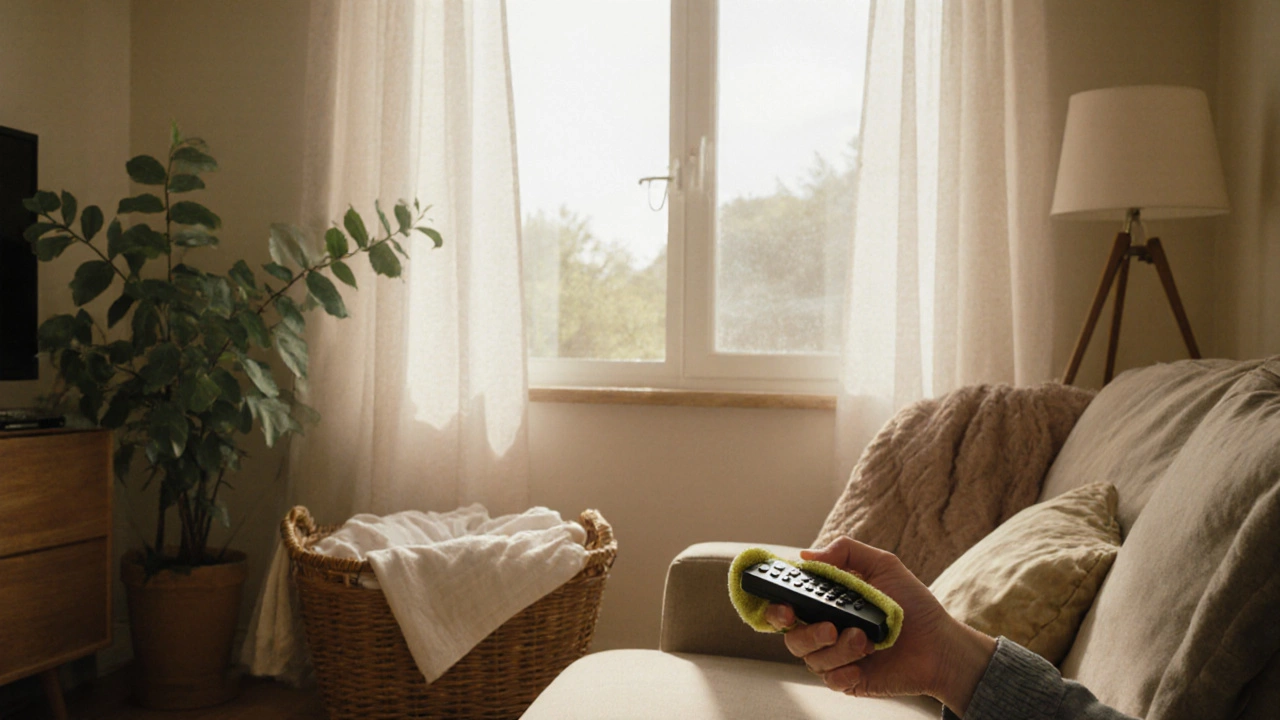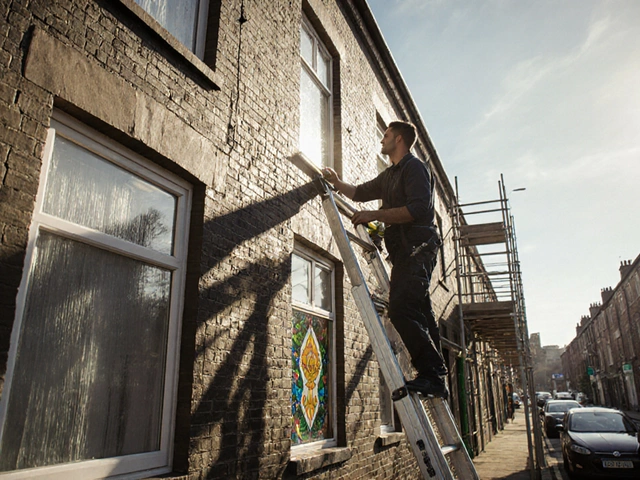Eco-Disinfectant Contact Time Calculator
Enter your disinfectant and surface to see the minimum contact time needed for effective germ elimination. Important: All natural disinfectants require proper contact time to work effectively.
Why Contact Time Matters
Natural disinfectants work differently than chemical cleaners. They need time to break down germ cells. As mentioned in the article, most people wipe surfaces too soon, which defeats the purpose of disinfection.
Example: 70% alcohol requires at least 5 minutes of contact time on surfaces to kill 99.9% of pathogens. Wiping after 30 seconds leaves 80% of germs intact.
Most people think disinfecting their home means grabbing a bottle of bleach or a spray with a long list of unpronounceable ingredients. But you don’t need harsh chemicals to kill germs effectively. In fact, many of those products do more harm than good-irritating lungs, polluting waterways, and leaving behind toxic residues. The truth? You can completely disinfect a house using simple, natural ingredients that are safe for kids, pets, and the planet.
Why Eco-Friendly Disinfection Works
Germs don’t care if your cleaner is green or chemical-laden. What matters is whether you’re using something that actually kills pathogens. The Centers for Disease Control and Prevention (CDC) confirms that alcohol-based solutions (70% or higher), hydrogen peroxide, and even vinegar (when used correctly) are proven to eliminate common household bacteria and viruses, including influenza and E. coli.
Here’s the catch: many commercial disinfectants only work if left wet on surfaces for 10 minutes. Most people spray and wipe immediately, which does nothing. Natural disinfectants follow the same rule. You don’t need fancy tools-just time, patience, and the right ingredients.
What You Actually Need
You won’t need a closet full of bottles. Just five basic items:
- 70% isopropyl alcohol (rubbing alcohol)
- 3% hydrogen peroxide (sold in brown bottles at any pharmacy)
- White distilled vinegar (5% acidity)
- Castile soap (unscented or lightly scented)
- Essential oils (tea tree, eucalyptus, or lavender-optional for scent and extra antimicrobial power)
These aren’t just trendy ingredients. They’re backed by research. A 2019 study in the Journal of Applied Microbiology found that a mix of 70% alcohol and 3% hydrogen peroxide killed 99.9% of surface pathogens in under 30 seconds. Vinegar alone won’t kill all viruses, but it’s excellent at cutting grease and removing mold spores when combined with heat or sunlight.
Step-by-Step: How to Disinfect Every Room
Disinfecting isn’t cleaning. Cleaning removes dirt. Disinfecting kills germs. You must do both-in the right order.
Kitchen
The kitchen is ground zero for bacteria. Countertops, sink, fridge handles, cutting boards, and the microwave are hotspots.
- Wipe down all surfaces with soapy water and a cloth. Rinse with clean water.
- For disinfecting, spray 70% alcohol directly onto countertops, faucet handles, and appliance buttons. Let sit for 5 minutes. Wipe with a clean cloth.
- For cutting boards, scrub with a mix of 1 tablespoon hydrogen peroxide and 1 cup water. Let sit for 10 minutes, then rinse. Don’t use vinegar on wood boards-it can dry them out.
- Empty the fridge. Wipe shelves with vinegar and water (1:1 ratio), then follow up with a light spray of alcohol on high-touch areas like the door seal and temperature dial.
Bathroom
Bathrooms are the second most contaminated room in the house. Toilets, sinks, showerheads, and toothbrush holders harbor bacteria like salmonella and staph.
- Flush the toilet with the lid down before cleaning.
- Scrub the toilet bowl with baking soda and vinegar. Let it fizz for 10 minutes, then scrub with a brush. Rinse.
- Spray hydrogen peroxide on the toilet seat, flush handle, and faucet. Let sit for 5 minutes. Wipe clean.
- Wipe down shower walls and doors with vinegar solution. For mold in grout, mix 1 part hydrogen peroxide with 2 parts water, spray, and leave for 1 hour before scrubbing.
- Soak toothbrushes in a cup of 70% alcohol for 5 minutes, then rinse and air-dry upright.
Living Areas and Bedrooms
Remote controls, light switches, doorknobs, phones, and tablets get touched dozens of times a day. These are germ magnets.
- Use alcohol wipes or a cloth dampened with 70% alcohol to clean electronics. Never spray directly-moisture can damage circuits.
- For doorknobs and light switches, spray alcohol and let sit for 5 minutes. Wipe dry.
- Wash all bedding, curtains, and throw pillows in hot water (60°C or higher). Dry on high heat.
- For upholstered furniture, vacuum thoroughly first, then lightly mist with a solution of 1 cup water, 1 cup alcohol, and 10 drops tea tree oil. Let dry completely.
Floors
Hardwood, tile, and laminate floors trap germs in cracks and crevices. Carpets hold even more.
- For hard floors: Mix 1 gallon of warm water with ½ cup white vinegar and 10 drops of eucalyptus oil. Mop as usual. No rinsing needed.
- For carpets: Sprinkle baking soda liberally, let sit for 15 minutes, then vacuum. For spot disinfecting, spray 3% hydrogen peroxide directly on stains or high-traffic areas. Blot with a towel. Let air dry.
Laundry
Your clothes and towels carry germs too. Detergent alone doesn’t kill them.
- Add ½ cup white vinegar to the rinse cycle. It kills bacteria and softens fabrics naturally.
- Wash gym clothes, towels, and bedding in water at least 60°C. Dry on high heat for at least 45 minutes.
- Don’t overload the machine. Clothes need space to move so water and vinegar can reach all surfaces.

What Not to Do
Many people think mixing vinegar and bleach makes a super-cleaner. It doesn’t. It creates toxic chlorine gas. Never combine vinegar with hydrogen peroxide either-they can form peracetic acid, which is corrosive.
Don’t use essential oils as standalone disinfectants. Tea tree oil has antimicrobial properties, but it needs to be in the right concentration and paired with alcohol or peroxide to be effective. A drop in a spray bottle won’t cut it.
Avoid “natural” branded cleaners that say “antibacterial” but don’t list active ingredients. Many are just scented water. Check labels: if the first ingredient isn’t alcohol, vinegar, or hydrogen peroxide, it’s not disinfecting.
When to Call a Pro
For most homes, this routine works. But if someone in your household is immunocompromised, or if you’ve had a case of norovirus or flu, you may need extra steps.
- After illness, disinfect all surfaces again using 3% hydrogen peroxide-leave it on for 10 minutes.
- Replace sponges and dishcloths weekly. Soak them in boiling water for 5 minutes or run them through the dishwasher on high heat.
- If you have mold growing behind walls or under floors, stop. That’s not a DIY fix. Call a professional. Natural cleaners won’t touch deep mold.

Keeping It Clean After Disinfecting
Disinfecting once isn’t enough. Germs come back fast. Build habits:
- Wipe down high-touch surfaces daily with alcohol spray.
- Remove shoes at the door to avoid tracking in dirt and microbes.
- Open windows for 10 minutes every morning. Sunlight and airflow naturally reduce airborne germs.
- Replace kitchen sponges every 3 days. Use silicone scrubbers or washable cloths instead.
- Keep a small spray bottle of alcohol mix by the front door. Spray keys, wallets, and phone bags before bringing them inside.
This isn’t about perfection. It’s about reducing risk. A clean home doesn’t mean sterile. It means you’ve taken control-without poisoning your family or the planet.
Can vinegar alone disinfect a house?
Vinegar is great for cutting grease and removing mold, but it’s not a registered disinfectant. It kills about 80% of bacteria and some viruses, but not all. For full disinfection, use vinegar as a pre-cleaner, then follow up with alcohol or hydrogen peroxide.
Is hydrogen peroxide safe for colored clothes?
Yes, 3% hydrogen peroxide is safe for most colored fabrics. It’s actually used in many eco-friendly laundry boosters. Test on an inconspicuous area first, especially with dark or delicate fabrics. Avoid using it on silk or wool.
How long does alcohol need to sit to disinfect?
For effective disinfection, alcohol needs to stay wet on the surface for at least 30 seconds, but 5 minutes is ideal. Most people wipe too soon. Set a timer if you need to. The surface should stay damp the whole time.
Can I use lemon juice instead of vinegar?
Lemon juice has some antibacterial properties, but it’s not as reliable as vinegar. Its acidity varies by fruit, and it doesn’t penetrate grime or kill mold as effectively. Stick with white distilled vinegar-it’s consistent, cheap, and proven.
Do I need to wear gloves when using these natural cleaners?
For most people, gloves aren’t necessary with vinegar, alcohol, or hydrogen peroxide at household concentrations. But if you have sensitive skin or eczema, wear thin cotton gloves. Never use rubber gloves with hydrogen peroxide-it can degrade the material over time.
Final Thought: Clean Isn’t Sterile
You don’t need to kill every single germ. Your body needs exposure to microbes to stay strong. The goal isn’t a hospital-level clean. It’s a healthy home-free of toxic fumes, safe for children and pets, and kind to the environment. With these steps, you’re not just cleaning. You’re protecting your family in a way that lasts.





